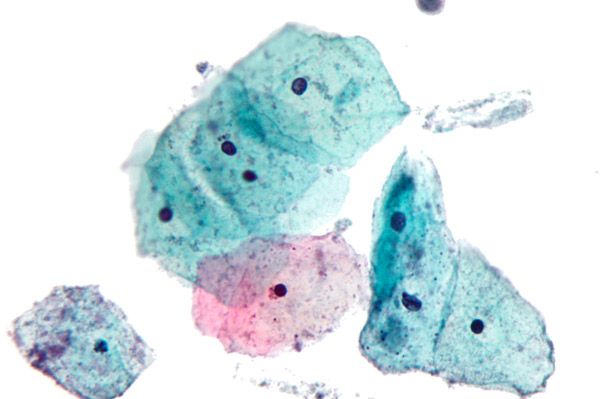Medical expert of the article
New publications
Trichomoniasis in women
Last reviewed: 04.07.2025

All iLive content is medically reviewed or fact checked to ensure as much factual accuracy as possible.
We have strict sourcing guidelines and only link to reputable media sites, academic research institutions and, whenever possible, medically peer reviewed studies. Note that the numbers in parentheses ([1], [2], etc.) are clickable links to these studies.
If you feel that any of our content is inaccurate, out-of-date, or otherwise questionable, please select it and press Ctrl + Enter.
Trichomoniasis is an infectious disease caused by the urogenital trichomonad (Trichomonas vaginalis), which parasitizes the organs of the human genitourinary system. In the structure of transmissible diseases, it makes up 10-30%. Trichomonas infection increases the risk of HIV transmission in men and women, their role in complicating pregnancy, developing infertility, postoperative infections and cervical neoplasia has been proven.
Epidemiology
The frequency of trichomonas infection in the structure of urethrogenic STIs is about 10%.
Causes trichomoniasis in women
The causative agent of trichomoniasis is Trichomonas vaginalis, which is a single-celled microorganism of a pear-shaped form, 8 to 24 microns in size, with flagella and an undulating membrane that provides the ability to actively move.
Sexual transmission is considered dominant; newborn girls can become infected when passing through the birth canal of a sick mother, as well as through indirect sexual and household means through gloves, oilcloths, bedpans and other toilet items. Factors that contribute to trichomonas invasion include changes in vaginal pH and hormonal imbalances. The greatest danger is posed by patients with a sluggish inflammatory process.

Trichomonads are mainly localized in areas covered with flat epithelium. In women, they mainly affect the vagina with the development of trichomonas vulvovaginitis. When they enter the urethra or cervical canal, they can spread along the mucous membrane and through the intercellular spaces to the subepithelial layer, where they cause an inflammatory reaction. In women, the large vestibular and paraurethral glands are also involved in the inflammatory process. Sometimes the presence of trichomonads in the urogenital organs is not accompanied by any symptoms. Without treatment, the process can continue indefinitely.
Pathogens
Symptoms trichomoniasis in women
The incubation period lasts from several days to two months.
Trichomoniasis is characterized by multifocal lesions of various parts of the genitourinary system, a protracted course and a tendency to relapse. Colpitis, urethritis, and cervicitis are most often observed. Patients usually complain of profuse leucorrhoea, pain, itching in the area of the external genitalia and dysuric phenomena.
What's bothering you?
Forms
The following classification of trichomoniasis is currently used:
- fresh:
- spicy,
- subacute,
- torpid (low-symptom, duration of which does not exceed 2 months);
- chronic (sluggish progression with the disease duration exceeding 2 months);
- trichomonas carriage.
 [ 16 ]
[ 16 ]
Complications and consequences
- Bartholin's gland abscess.
- Metroendometritis.
- Salpingo-oophoritis.
- Parametritis.
- Pelvioperitonitis.
- In pregnant women - premature rupture of membranes and childbirth.
Diagnostics trichomoniasis in women
During examination, focal hyperemia of the vulva, vaginal walls and cervix, foamy discharge, and pH of vaginal contents > 4.5 are detected.
Laboratory research methods:
- The microscopic method is the main one. When examining a native (wet) preparation, mobile trichomonads are detected. In some cases, smears stained with methylene blue or Romanovsky-Giemsa can be used. When viewing stained smears, false positive results are possible.
- The cultural method is seeding on selective media to detect mobile trichomonads. It is used to supplement the microscopic method and as the main method for detecting trichomonads in children and men.
- Molecular biological methods (PCR) are actively studied. Their practical application is possible.
- Immunoluminescent methods (ILM) are not recommended for use.
Screening
Examination of female patients with complaints of itching, burning, dyspareunia, dysuria, and foamy yellow discharge.
The doctor's procedure when diagnosed with trichomoniasis
- Informing the patient about the diagnosis.
- Providing information about the patient's behavior during treatment.
- Collection of sexual anamnesis.
- Detection and examination of sexual contacts is carried out depending on the clinical manifestations of the disease and the expected period of infection - from 3 days to 6 months.
- Identification and examination of household contacts is carried out by:
- for children (girls) living together in the same living space;
- If trichomoniasis is detected in a child (girl) attending a preschool institution, the children and group workers are examined and, if necessary, tested.
- If trichomoniasis is detected in a woman in labor, the newborn girl is examined.
- Conducting epidemiological measures among contact persons (sanitization of the epidemiological focus):
- examination and screening of contact persons;
- laboratory data statement;
- deciding on the need for treatment, its scope and observation period.
- If the contact persons live in other territories, a work order is sent to the territorial KVU.
- If there are no results from treatment, it is recommended to consider the following possible reasons:
- false positive test result;
- non-compliance with treatment regimen, inadequate therapy;
- repeated contact with an untreated partner;
- infection from a new partner;
- infection with other microorganisms.
Patient education
Patient education should focus on the implementation of measures to prevent sexually transmitted infections and to prevent infection of sexual partners.
What do need to examine?
What tests are needed?
Who to contact?
Treatment trichomoniasis in women
For the treatment of trichomoniasis in women, metronidazole (Flagyl) or tinidazole is usually used, at a dosage of 2 g orally once. It should be used with extreme caution during pregnancy, especially in the first trimester.
In randomized clinical trials, the recommended treatment regimens with metronidazole lead to a complete cure in 90-95%. However, in 4-5% of cases, trichomonads are resistant to metronidazole.
More information of the treatment

